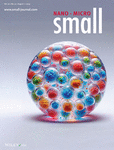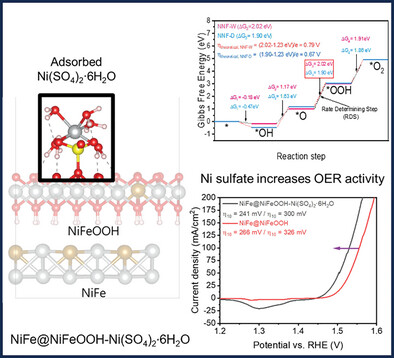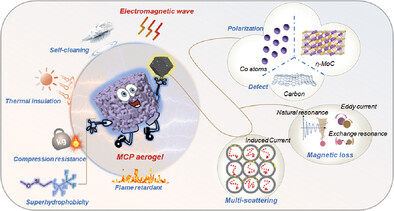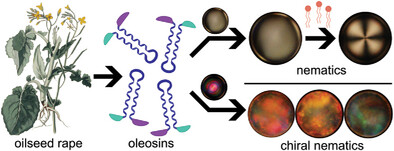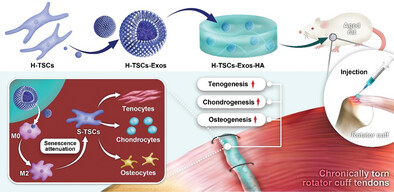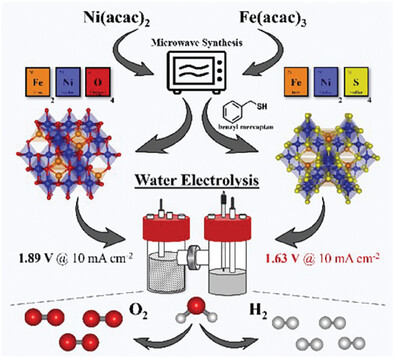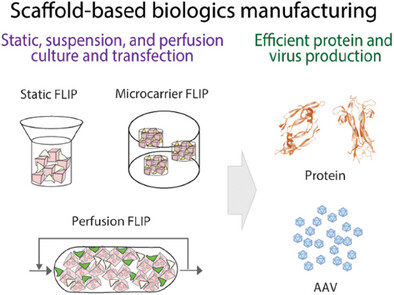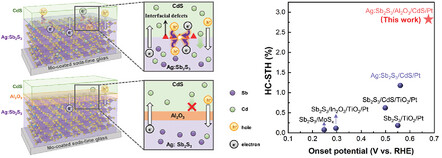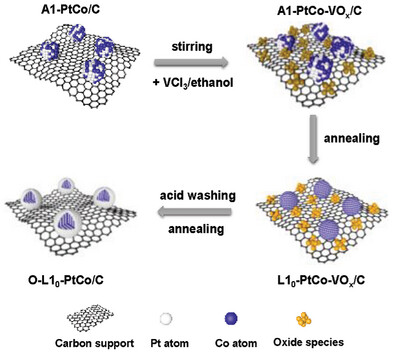Journal list menu
Export Citations
Download PDFs
Cover Picture
Cellular Patterning Alone Using Bioprinting Regenerates Articular Cartilage Through Native-Like Cartilagenesis (Small 31/2024)
- First Published: 01 August 2024
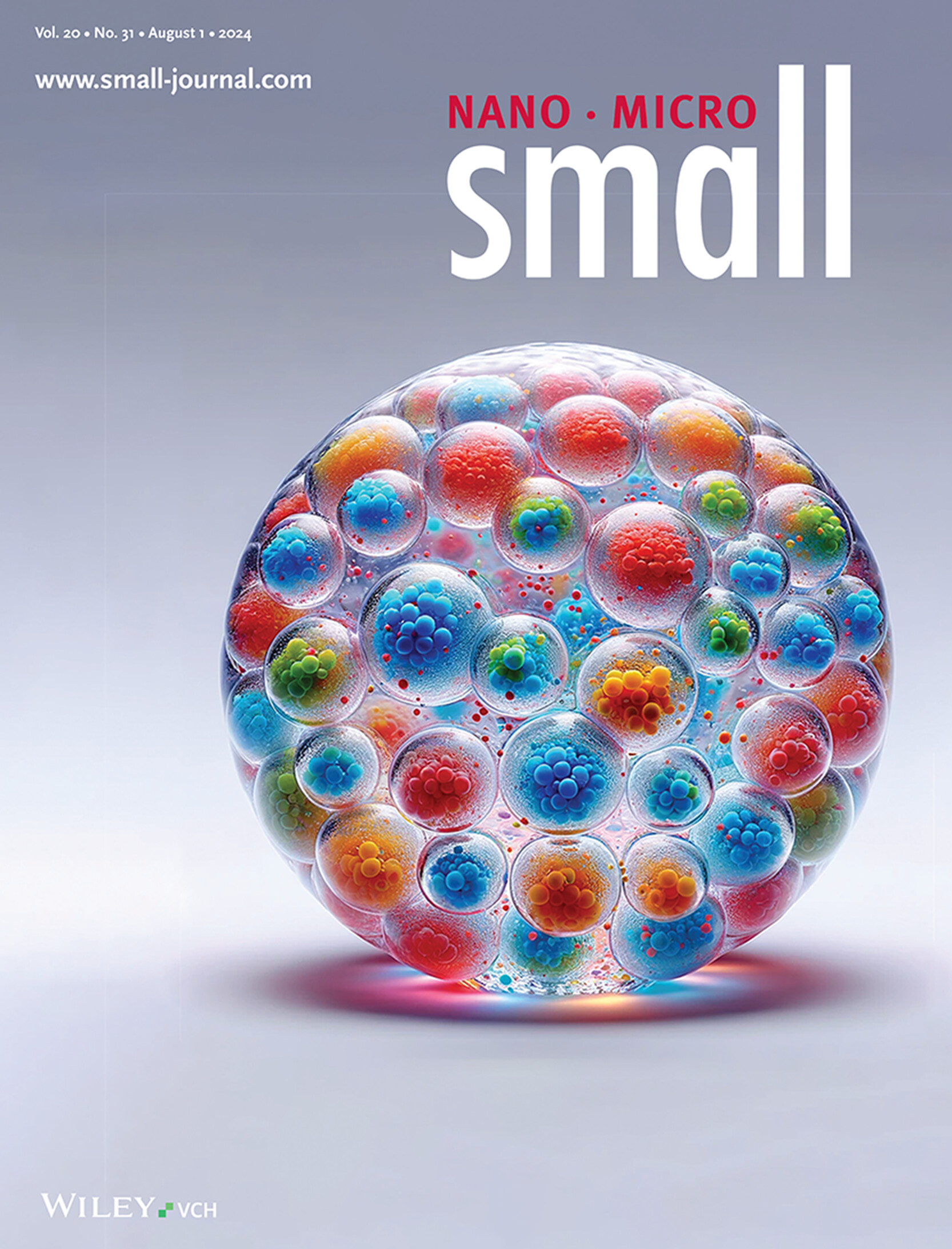
Cartilage Bioprinting
A novel bioprinting method demonstrates that, under the sole influence of bioprinted cellular patterning, native-like micro cartilage (PA-MCTs) can be formed. This technique recapitulates the morphology, biochemical composition, and mechanical properties of native cartilage. Additionally, PA-MCTs serve as models for therapeutic drug screening and cartilage development studies. More in article number 2308694, Brian E. Grottkau, Zhixin Hui, Yonggang Pang.
Inside Front Cover
Direct Evidence of Reversible Changes in Electrolyte and its Interplay with LiO2 Intermediate in Li-O2 Batteries (Small 31/2024)
- First Published: 01 August 2024

Li-O2 Batteries
Experiments and calculations provide essential insights into the discharge/charge mechanisms of a Li–O2 cell using a carbon electrode and high-Gutmann donor number solvent. It revealed a dynamic reversible change in the DMSO molecule resulting from interaction of LiO2–(solvent)n, thereby confirming the solution mechanism for oxygen reduction reactions through an unprecedented analysis of the electrolyte molecule using operando Raman, supported by theoretical simulations. More in article number 2306895, Juarez L. F. Da Silva, Gustavo Doubek, and co-workers.
Inside Back Cover
Surface Pinning of Mn by Oxidation State Control for the Synthesis of Cobalt-Free, Ni-Rich, Core/Shell Structured Cathode Materials (Small 31/2024)
- First Published: 01 August 2024
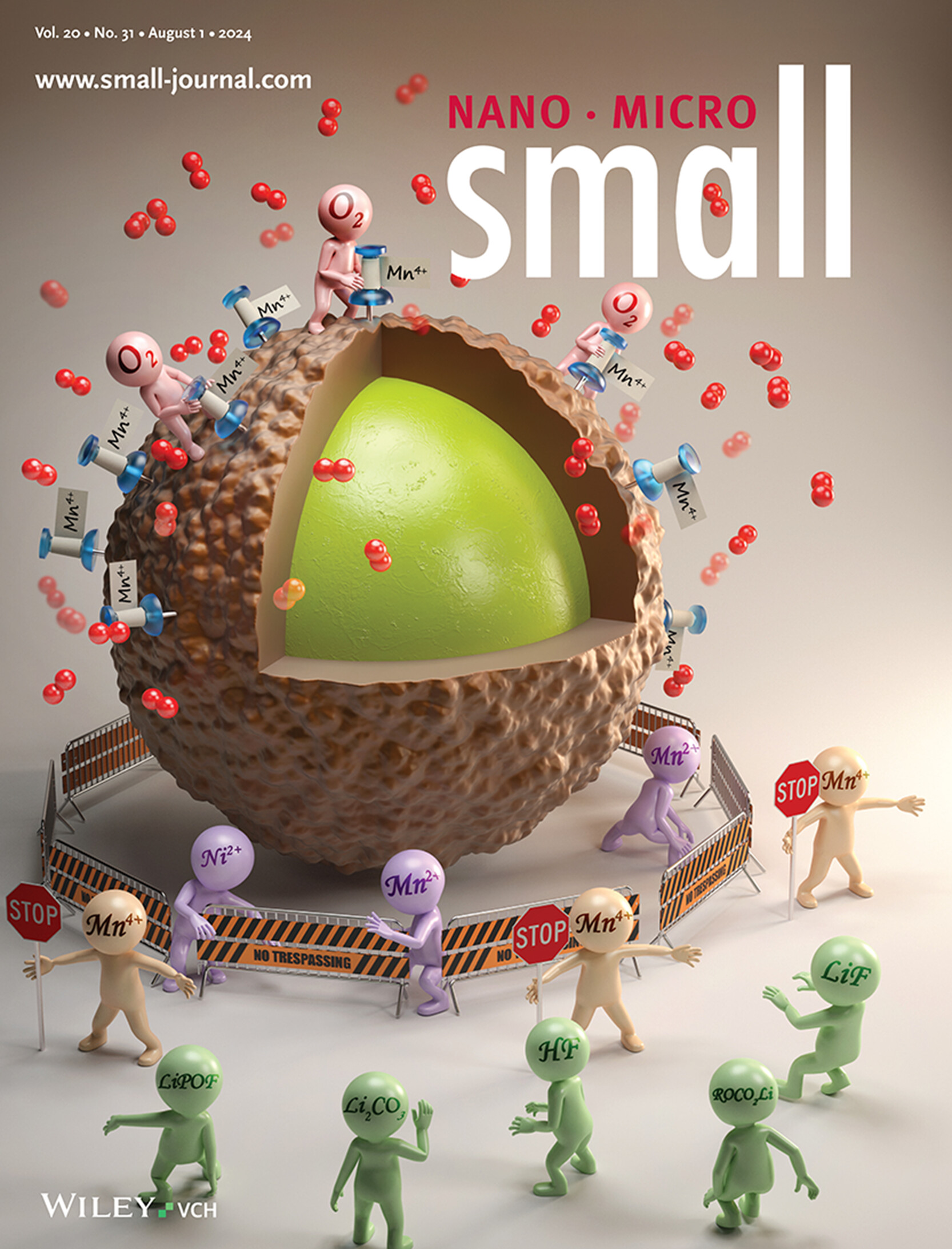
Cathode Materials
Calcination of Ni-rich core/Mn-rich shell precursors with a pre-oxidized Mn component demonstrably suppresses Mn interdiffusion. This preservation of the core/shell architecture minimizes surface Ni content, thereby enhancing interfacial stability. Consequently, the core/shell design significantly mitigates surface-induced side reactions and cross-talk effects, leading to reduced growth of interfacial impedance during battery operation. In article number 2400518, Jin Ho Bang and co-workers.
Back Cover
Switchable Power Generation in Triboelectric Nanogenerator Toward Chip-Less Wearable Power Module Applications (Small 31/2024)
- First Published: 01 August 2024
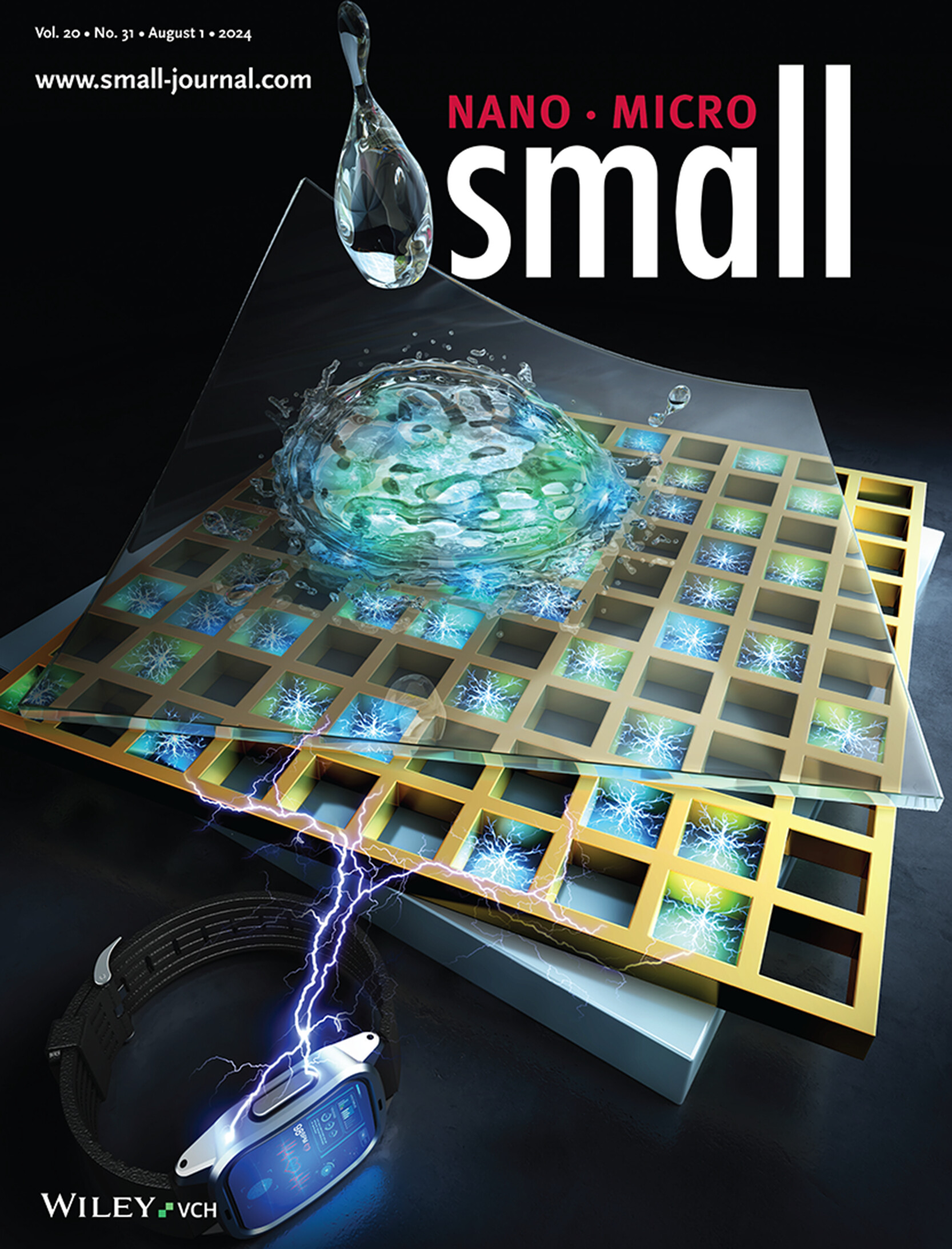
Triboelectric Nanogenerator
Triboelectric nanogenerators with a convertible rectification feature, in which the direction of the charge flow generated is systematically controlled upon slow and random droplet impingement, is reported, paving the path for the incorporation of nanogenerators into portable self-powered electronics. More in article number 2306980, Dong-Myeong Shin and co-workers.
Masthead
Review
Progress of Polymer Electrolytes Worked in Solid-State Lithium Batteries for Wide-Temperature Application
- First Published: 10 March 2024
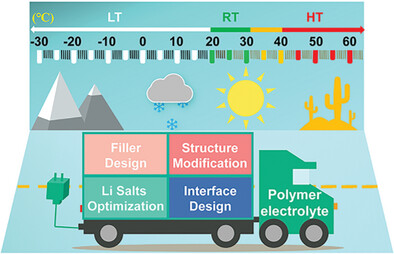
The diversification of electronic device applications imposes elevated requirements on the broad temperature adaptability and safety of polymer-based solid-state batteries. Modification strategies, including filler design, structural modification, optimization of Li salts, and interface design, can effectively address the limitations of polymer electrolytes, paving the way for versatile electrolyte applications across a wide temperature range.
Recent Development on Transition Metal Oxides-Based Core–Shell Structures for Boosted Energy Density Supercapacitors
- First Published: 09 April 2024
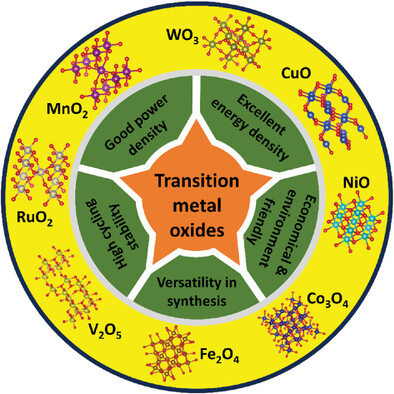
Transition Metal Oxides (TMOs) represent a promising class of materials for supercapacitors. The ongoing progress in research within this domain suggests that TMOs are poised to assume a crucial function in the advancement of high-performance supercapacitors, thereby facilitating the establishment of a more effective and ecologically sustainable energy storage framework. The pictorial illustration of the transition metal structures and their general properties is represented above.
The Emerging Star of Carbon Luminescent Materials: Exploring the Mysteries of the Nanolight of Carbon Dots for Optoelectronic Applications
- First Published: 10 March 2024
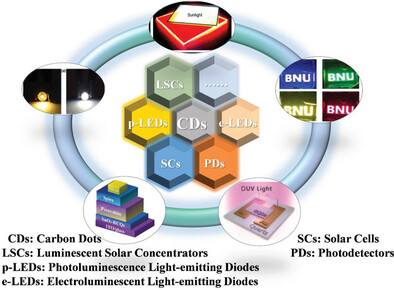
Carbon dots (CDs) have attracted huge interest due to their superior optical properties. The application of CDs in the field of optoelectronics is developed fast. Here, a detailed summary of their applications in the field of luminescent solar concentrators (LSCs), light-emitting diodes (LEDs), solar cells, and photodetectors is reported. The definition, categories, and synthesis methods of CDs are briefly introduced.
Additive Manufacturing: A Paradigm Shift in Revolutionizing Catalysis with 3D Printed Photocatalysts and Electrocatalysts Toward Environmental Sustainability
- First Published: 18 April 2024
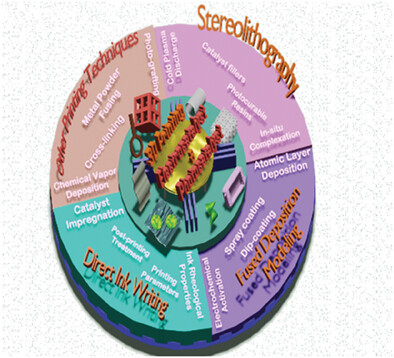
The central circular platform symbolizes 3D printing's transformative influence on photocatalysis (PC) and electrocatalysis (EC). The review elucidates the utilization of 3D printing methodologies for the cutting-edge development and production of intricate photocatalysts and electrocatalysts. The review delves into recent advancements in 3D-printed substrate fabrication techniques, highlighting their impact on energy and environmental applications.
Research Article
Cellular Patterning Alone Using Bioprinting Regenerates Articular Cartilage Through Native-Like Cartilagenesis
- First Published: 19 May 2024
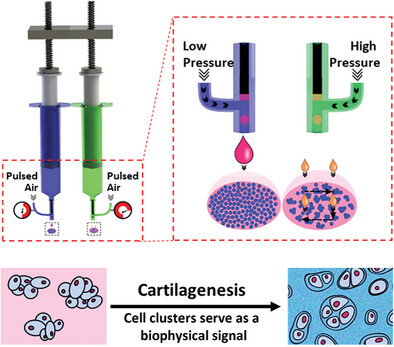
The method presented here can pattern cells inside a droplet of bioink expanding the capability of bioprinting to control micro-structures. Bioprinted patterned micro-cartilage is comparable to native articular cartilage. The micro-cartilage repaired cartilage defects by self-assembling into macro-articular-cartilage of clinically relevant sizes and formed a preliminary zonal structure. Individual micro-cartilage can also be used for drug screening and cartilage development studies.
Direct Evidence of Reversible Changes in Electrolyte and its Interplay with LiO2 Intermediate in Li-O2 Batteries
- First Published: 12 April 2024
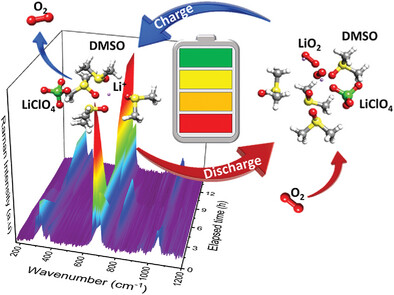
Experiments and calculations allowed a detailed explanation of the discharge/charge mechanisms of a Li-O2 cell using a carbon electrode and high-DN solvent. It revealed a dynamic reversible change in the DMSO molecule resulting from interaction of LiO2–(solvent)n, thereby confirming the solution mechanism for ORR through an unprecedented analysis of the electrolyte molecule using operando Raman, supported by simulations.
Surface Pinning of Mn by Oxidation State Control for the Synthesis of Cobalt-Free, Ni-Rich, Core/Shell Structured Cathode Materials
- First Published: 15 May 2024
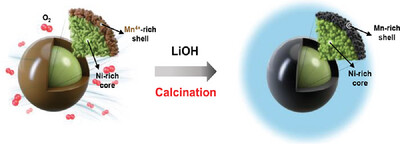
This study proposes a method to suppress interdiffusion in nickel-rich core/shell cathode materials by controlling the Mn oxidation state. The preoxidation of Mn in the cathode material precursor demonstrably reduces interdiffusion and improves interfacial stability with the electrolyte. This meticulously designed core/shell architecture further restricts interfacial side reactions and metallic deposition on both the cathode and anode during battery cycling.
Switchable Power Generation in Triboelectric Nanogenerator Toward Chip-Less Wearable Power Module Applications
- First Published: 12 February 2024
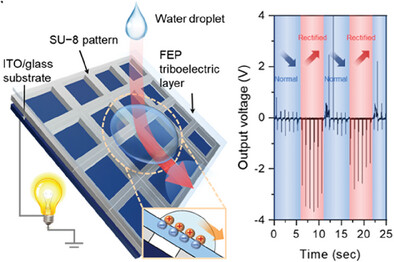
Triboelectric nanogenerators (TENGs) with a convertible rectification feature, in which the direction of the charge flow generated by TENGs is systematically controlled by electrostatic breakdown over the course of slow and random mechanical stimuli, is reported, paving the path for the development of all-in-one nanogenerators and the incorporation of nanogenerators into wearable self-powered electronics in the near future.
A Versatile Virus-Mimetic Engineering Approach for Concurrent Protein Nanocage Surface-Functionalization and Cargo Encapsulation
- First Published: 10 May 2024
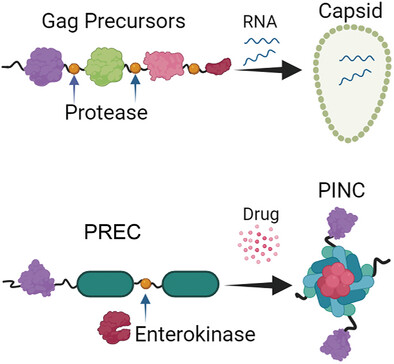
The HIV-1 Gag polypeptide precursors are mimicked to create precursors of nanocages (PRECs). It is shown that in the presence of a protease, the precursors are cleaved to form subunits that are spontaneously self-assembled to generate PINCs (Protein-induced nanocages). The PINC formation is used to encapsulate a cargo and concurrently decorate the nanocages’ surface with a protein.
A facile Immunoregulatory Constructional Design by Proanthocyanidin Optimizing Directional Chitosan Microchannel
- First Published: 29 February 2024

Inspired by the crystalline chitin component of crustacean exoskeleton and the multifunctionality of polyphenol, a facile immunoregulatory constructional design is proposed for engineering polyphenol-functionalized chitosan scaffolds with microchannel structure by directional freezing and alkaline salting out. These scaffolds exhibit satisfactory immune-regulatory performance and promote stem cell adhesion as well as osteogenic differentiation to enhance bone regeneration.
Photocatalytic Optical Hollow Fiber with Enhanced Visible-light-driven CO2 Reduction
- First Published: 03 March 2024

An S-type TMOF-10-NH2/g-C3N4 (TMOF/CNNS) photocatalyst is synthesized and used to realize photocatalytic hollow optical fibers for CO2 reduction with enhanced activity, yield, and light-energy utilization via electrostatic self-assembly. High CO2 photoreduction and selectivity for CO production are demonstrated by the TMOF/CNNS-coated optical fiber obtained under optimal conditions, demonstrating the potential of the proposed approach for practical applications.
Vertically-Aligned Card-House Structure for Composite Solid Polymer Electrolyte with Fast and Stable Ion Transport Channels
- First Published: 04 March 2024
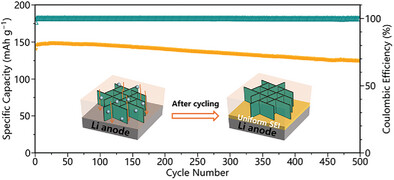
By engineering laponite nanosheets to form a vertically-aligned card-house structure, composite solid electrolyte with fast and stable ion transport channels is obtained. Lithium deposits uniformly along the channels on lithium anode and forms a homogeneous SEI layer during long-term cycling process, which contributes to the outstanding cycling stability of all-solid-state lithium batteries.
A New Composite Material with Energy Storage, Electro/Photo-Thermal and Robust Super-Hydrophobic Properties for High-Efficiency Anti-Icing/De-Icing
- First Published: 10 March 2024
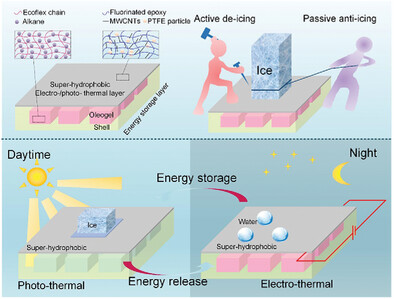
A composite material with energy storage, active electro-/photo-thermal de-icing and passive super-hydrophobic anti-icing properties is proposed. The top multifunctional layer exhibited efficient electro-/photo-thermal and super-hydrophobic performances. The oleogel material at the bottom layer can absorb energy during heating process and release it during the cooling process by phase transition, which can greatly delay the freezing time and save energy. This study provided a new way to manufacture multi-functional materials for practical anti-icing/de-icing applications.
Synthesis and Mechanism of 1D ZnO Based on Alkaline Dissolution-Conversion Strategy of High Stable and Soluble ɛ-Zn(OH)2
- First Published: 03 March 2024
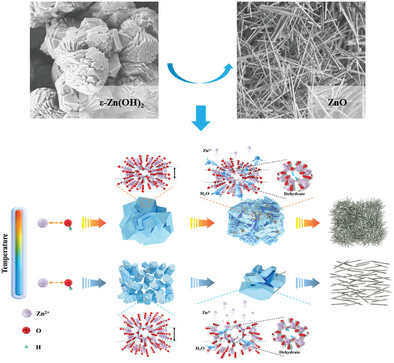
A highly soluble and stable ɛ-Zn(OH)2 is synthesized to prepare well-dispersed ZnO whiskers with an average aspect ratio of 41. The primary origin of high solubility and stability of ɛ-Zn(OH)2 is expansion of the unit cell. The process exhibits an extremely high solid content of 2.5% and an overall yield of 92%.
Multifunctional Umbrella: In Situ Interface Film Forming on the High-Voltage LiCoO2 Cathode by a Tiny Amount of Nanoporous Polymer Additives for High-Energy-Density Li-Ion Batteries
- First Published: 05 March 2024
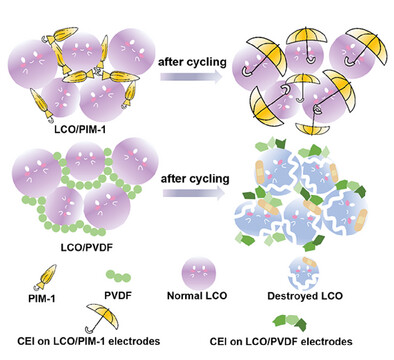
An ultra-small amount of additive of a multi-functional polymer with intrinsic microporosity (PIM-1) is used to prepare a kind of binder-free electrode. PIM-1 modulates the solvation structure of LiPF6 due to its unique structure and reduces the irreversible phase transition of the LiCoO2 (LCO) cathode, thereby enhancing the cyclic stability and improving the rate performance.
Modulating Lattice Oxygen Activity of Iron-Based Triple-Conducting Nanoheterostructure Air Electrode via Sc-Substitution Strategy for Protonic Ceramic Cells
- First Published: 04 March 2024
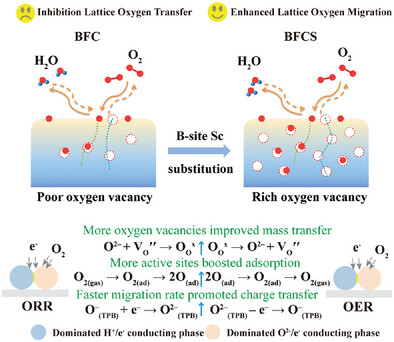
The BFCS air electrode formed by Sc-substitution has significantly enhanced lattice oxygen mobility, creating abundant oxygen vacancies and active sites, which contribute to the adsorption and dissociation of oxygen species, mass transfer, and charge transfer electrochemical processes in electrode reactions (ORR/OER).
Phase Engineering via Aluminum Doping Enhances the Electrochemical Stability of Lithium-Rich Cobalt-Free Layered Oxides for Lithium-Ion Batteries
- First Published: 01 March 2024

This study investigates the impact of aluminum doping on Li1.26Ni0.15Mn0.61O2, a lithium-rich, cobalt-free layered oxide. The undoped material has a monoclinic structure, while the Al-doped materials contain a more stable rhombohedral phase at the particle edges. This work quantitatively elucidates the stabilizing effect of the rhombohedral shell, shedding light on mechanisms that enhance the electrochemical stability of lithium-rich layered oxides.
Ultrathin and Biodegradable Bismuth Oxycarbonate Nanosheets with Massive Oxygen Vacancies for Highly Efficient Tumor Therapy
- First Published: 03 March 2024
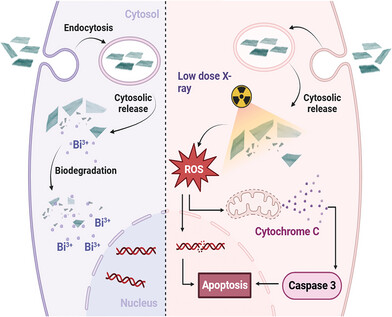
A bismuth-based ultrathin nanosheet with massive oxygen vacancies is exploited for highly efficient tumor radiotherapy. The exposure of almost all atoms to environmental factors and the nature of oxycarbonates makes the nanosheet easily degrade into biocompatible species without causing any damage to the liver or kidney.
Multiple Treatment of Triple-Negative Breast Cancer Through Gambogic Acid-Loaded Mesoporous Polydopamine
- First Published: 06 March 2024

MPDA serves as a photothermal agent and is proved to be a high-loading carrier for GA. GA acts not only as a cytotoxic drug but also inhibits HSP90, sensitizing photothermal therapy. The GA-loaded MPDA nanoparticles are demonstrated can synergistically inhibit tumor growth, trigger immunogenic cell death, and increase activated effector T cells and inflammatory cytokines, suggesting a promising strategy to enhance the clinical therapeutic effect on TNBC.
A Defective Disc-Like Cu1.96S Anode Material with the Efficient Cu Vacancies for High-Performance Sodium-Ion Storage
- First Published: 01 March 2024
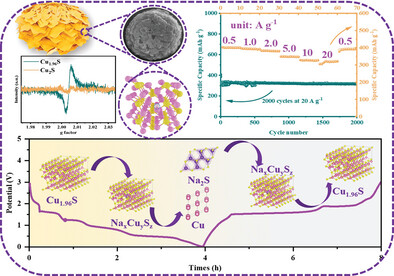
A Cu1.96S electrode material enriched with Cu vacancies is designed and synthesised by solvothermal and annealing process. It is found that the incorporation of Cu vacancies reduces the energy barrier of ion diffusion, as well as improves the electrical conductivity. Thus, the rate and cycling stability of Cu1.96S is significantly improved for sodium ions storage.
Heterostructured Graphene@Silica@Iron Phenylphosphinate for Fire-Retardant, Strong, Thermally Conductive Yet Electrically Insulated Epoxy Nanocomposites
- First Published: 01 March 2024
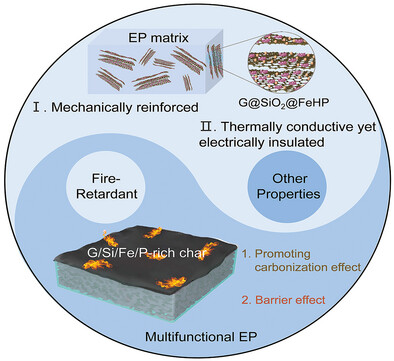
A multifunctional additive (G@SiO2@FeHP) is fabricated by in situ immobilization of silica (SiO2) and iron phenylphosphinate (FeHP) onto the graphene (G) surface. The results demonstrate that the as-designed G@SiO2@FeHP is a multifunctional, high-efficiency additive, and 1.0 wt% of it can simultaneously improve the fire retardancy, mechanical properties and thermal conductivity (λ) of epoxy resin (EP) yet effectively maintain the electrical insulation and dielectric properties.
A Near-Infrared Photothermal-Responsive Underwater Adhesive with Tough Adhesion and Antibacterial Properties
- First Published: 07 March 2024
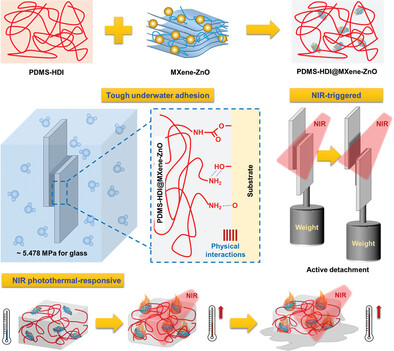
A near infrared (NIR) photothermal-responsive underwater adhesive is designed by incorporating MXene-based nanoparticles within isocyanate-modified polydimethylsiloxane polymers. The underwater adhesive possesses tough adhesion in service and can actively detach as needed. The tough adhesion is attributed to the covalent bonds and hydrogen bonds at the adhesive-substrate interface. NIR-triggered property allows for easy and active detachment of the adhesive.
Boosting Efficient Alkaline Hydrogen Evolution Reaction of CoFe-Layered Double Hydroxides Nanosheets via Co-Coordination Mechanism of W-Doping and Oxygen Defect Engineering
- First Published: 11 March 2024
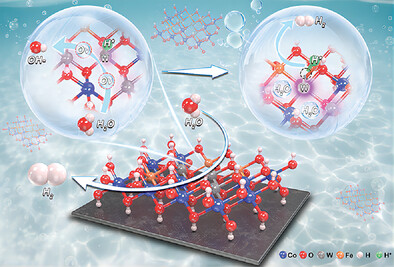
The tungsten doping induced local crystal distortion in CoFe-LDH, leading to a decrease in the crystal structure energy of CoFeW-LDH and a reduction in the formation energy of oxygen vacancies. The abundant presence of oxygen vacancies significantly lowered the barrier for cleaving HO─H bonds and impacted the coordination environment of tungsten atoms, consequently enhancing the performance of the hydrogen evolution reaction.
Electrochemical Nitrate-to-Ammonia Conversion Enabled by Carbon-Decoration of Ni─GaOOH Synthesized via Plasma-Assisted CO2 Reduction
- First Published: 01 March 2024
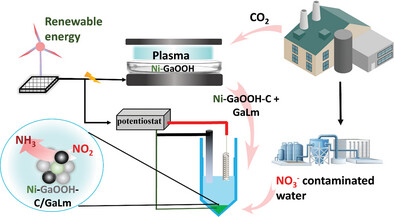
This study uses a low temperature plasma method to convert CO2 into solid carbon at a sonochemically dispersed liquid Ga/Ni alloy. This results in the formation of carbon decorated Ni─GaOOH particles that are then used as an electrocatalyst for nitrate conversion to ammonia. This results in an electrocatalyst that is stable with good rates of NH3 production of 26.3 µg h−1 mgcat−1.
A Coordination-Derived Cerium-Based Amorphous–Crystalline Heterostructure with High Electrocatalytic Oxygen Evolution Activity
- First Published: 03 March 2024
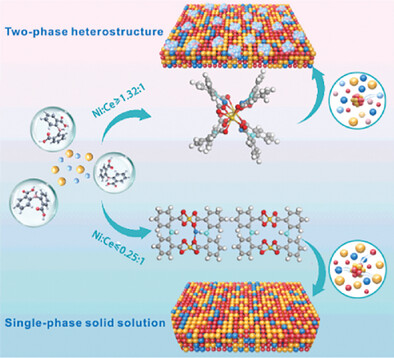
An innovative coordination-assisted strategy can be exploited to construct amorphous–crystalline heterostructures from heterometallic coordination polymers with high Ni contents. The favorable amorphous–crystalline interface and Ce–O–Ni interactions generated in the heterostructures derived from the coordination polymers facilitate charge transfer, thereby amplifying the electronic delocalization of Ni atoms and improving the activity for the oxygen evolution reaction.
Optimization of the Form Factors of Advanced Li-S Pouch Cells
- First Published: 06 March 2024
Atomic Imaging of Multi-Dimensional Ruddlesden–Popper Interfaces in Lead-Halide Perovskites
- First Published: 03 March 2024
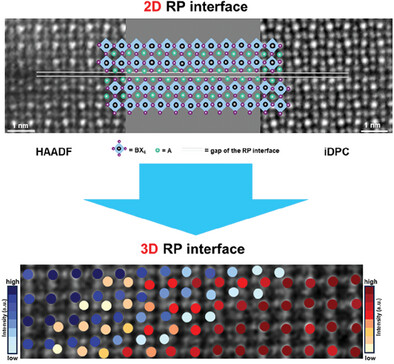
It is still challenging to atomically resolve the local structures of the complex Ruddlesden–Popper (RP) interfaces in lead-halide perovskites. Combining different imaging modes in electron microscopy, the multi-dimensional RP perovskite structures can be directly identified and analyzed in 2D images. These results provide real-space evidence for observing and studying the RP stacking process and help to better understand perovskite's structure-property relation, especially its complex local structures.
Reticular Heterojunction for Organic Photoelectrochemical Transistor Detection of Neuron-Specific Enolase
- First Published: 03 March 2024
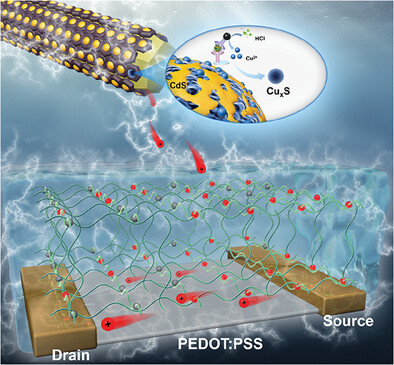
Based on MIL-68-NH2@COFTP-TA@CdS reticular heterojunction, a photoelectrode-gated OPECT biosensor is presented, which is exemplified by the Cu2+-triggered electron trap formation linking with a sandwich immunoassay. The reticular heterostructure enhances the regulation of the channel by the photosensitive gate. At zero gate bias, this OPECT biosensor exhibits high gain in response to light and good analytical performance for NSE.
Effect of Ni Sulfate Residue on Oxygen Evolution Reaction (OER) in Porous NiFe@NiFe Layered Double Hydroxide
- First Published: 05 March 2024
Arming Amorphous NiMoO4 on Nickel Phosphide Enables Highly Stable Alkaline Seawater Oxidation
- First Published: 03 March 2024
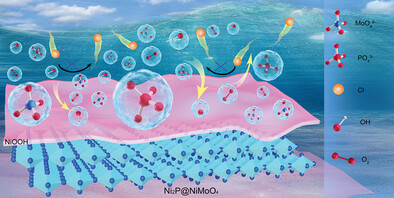
In situ forms a dual anionic PO43−/MoO42− layer protects the active sites NiOOH originating from Ni2P@NiMoO4, promoting an outstanding oxygen evolution activity with a current density of 1 A cm−2 at an overpotential of only 370 mV and maintaining remarkable stability up to 500 h in 1 m KOH + seawater.
Structural Control Enables Catalytic and Electrocatalytic Activity of Porous Tetrametallic Nanorods
- First Published: 03 March 2024
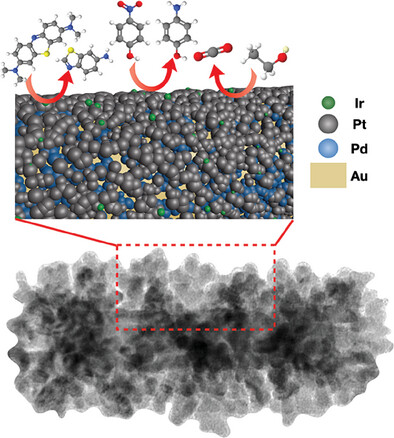
A reliable and robust synthesis of a functional tetrametallic nanoparticle type is presented, where a micro- and mesoporous PdPtIr shell is grown on Au nanorods. Multielemental synergy can expand the functionality of such composite nanoparticles enabling their use in catalytic and electrocatalytic application. The synthesized nanocatalyst shows excellent stability and performance.
Enhancing Nitrate Reduction to Ammonia Through Crystal Phase Engineering: Unveiling the Hydrogen Bonding Effect in δ-FeOOH Electrocatalysis
- First Published: 01 March 2024
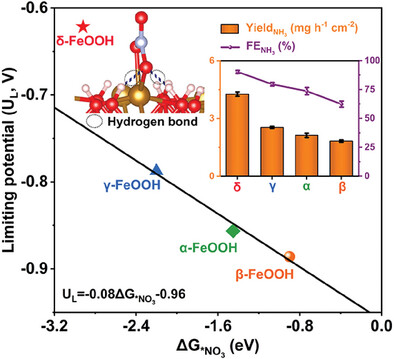
Crystal phase engineering is proposed to improve the performance of FeOOH toward electrochemical nitrate reduction to ammonia (NRA), with δ-FeOOH exhibiting superior NRA performance. Mechanistic studies unveil that hydrogen bonding interaction formed between δ-FeOOH and *NOx intermediates results in enhanced adsorption of *NOx, and breaks the linear scaling relationship.
Multifunctional MoCx Hybrid Polyimide Aerogel with Modified Porous Defect Engineering for Highly Efficient Electromagnetic Wave Absorption
- First Published: 07 March 2024
Biosensing with Oleosin-Stabilized Liquid Crystal Droplets
- First Published: 11 April 2024
Biosynthesis Parameters Control the Physicochemical and Catalytic Properties of Microbially Supported Pd Nanoparticles
- First Published: 10 March 2024
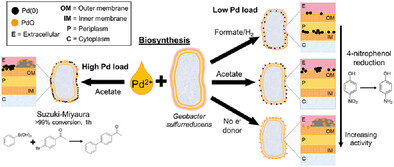
Pd metal loading on bacteria cells and electron donor selection controls size, Pd(II):Pd(0) ratio, and cellular location of bio-Pd nanoparticles. The study describes the novel synthesis of highly catalytically active microbe-supported PdO nanoparticles. Bio-Pd is synthesized with the fastest initial reaction rate for 4-nitrophenol reduction by bionanoparticles. Comparable activity to commercial Pd/C catalyst is observed for Suzuki–Miyaura crosscoupling reactions.
Printing 3D Metallic Structures in Porous Matrix
- First Published: 06 March 2024
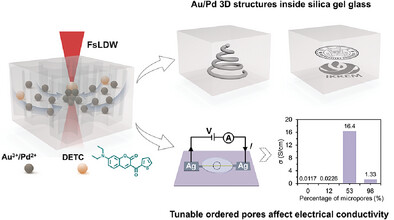
Using silica gel glass as a supporting medium and employing FsLDW, conductive multilayered and 3D gold/palladium structures are printed. How the pore size of the silica gel glass affects the electrical conductivity of printed metal wires is systematically examined. This 3D printing method is versatile and offers expanded opportunities for applying metallic micro/nanostructures in optoelectronic devices.
Multifunctional Heterostructured Fe3O4-FeTe@MCM Electrocatalyst Enabling High-Performance Practical Lithium-Sulfur Batteries Via Built-in Electric Field
- First Published: 03 March 2024

The elaborately prepared Fe3O4-FeTe@MCM loaded the highly dispersed nanoparticles with built-in electric field in the hollow multi-channel nanospheres, which can regulate the bidirectional catalytic conversion of polysulfide through the lithophilic and sulfophilic sites at the heterogeneous interface and the charge redistribution to achieve high performance lithium-sulfur batteries.
High-Loading Lithium-Sulfur Batteries with Solvent-Free Dry-Electrode Processing
- First Published: 03 March 2024
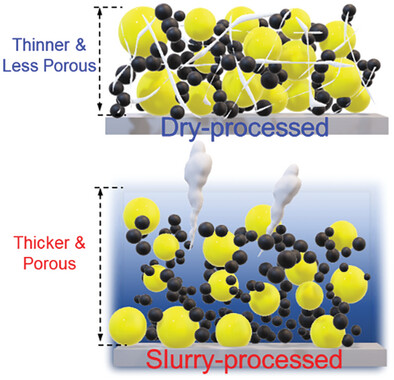
Solvent-free dry-electrode processing enables fabricating the extremely high-loading sulfur and Li2S cathodes by maintaining a stable electrode architecture with fibrillated PTFE binders. The dry-processed electrodes demonstrate scalability and practicality, as evidenced by their application in both single-layer and multi-layer pouch cells.
Encapsulation of Enzymes into Hydrophilic and Biocompatible Metal Azolate Framework: Improved Functions of Biocatalyst in Cascade Reactions and its Sensing Applications
- First Published: 22 March 2024
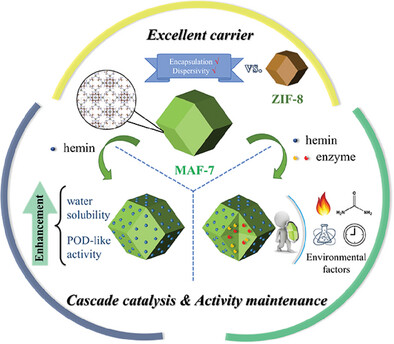
Utilizing hydrophilic and biocompatible MAF-7 as carrier, the activity improvement of artificial enzymes and sustainability of encapsulated natural enzymes can be achieved contrasting with ZIF-8. Detections for specific substrates or inhibitors with favorable sensitivity are accomplished attibute to the excellent performance of the cascade biocatalysis system.
A Synthetic Multivalent Lipopeptide Derived from Pam3CSK4 with Irreversible Influenza Inhibition and Immuno-Stimulating Effects
- First Published: 04 March 2024
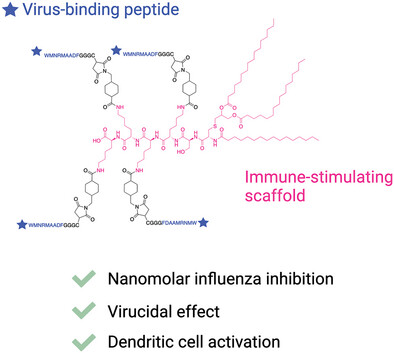
Pam3FDA, a representative molecule of an immuno-stimulating antiviral system (ISAS) combining the TLR1/2 agonist Pam3CSK4 with multivalent influenza-binding peptides, shows no cytotoxicity up to 500 µM and potent H1N1 inhibition (EC50 = 20 nM) with an irreversible mechanism. It also retains dendritic cell maturation stimulation, crucial for inducing an adaptive immune response to influenza infection.
Multi-Functional and Flexible Nano-Silver@MXene Heterostructure-Decorated Graphite Felt for Wearable Thermal Therapy
- First Published: 03 March 2024
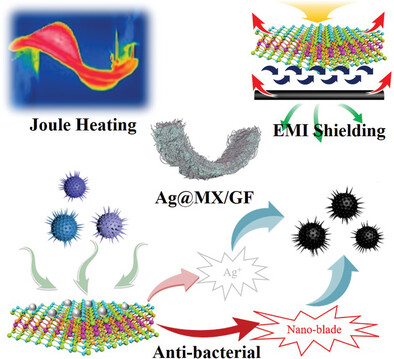
In this work, a multi-functional and flexible AgNPs@MXene heterostructure-decorated graphite felt for wearable thermal therapy is prepared. The resultant film exhibits remarkable Joule heating performance (reaching 128 °C within 100 s at 2.7 V), superior electromagnetic interference (EMI) shielding effectiveness (53 dB), and exceptional antibacterial activity (>95% anti-bacterial rate toward Bacillus subtilis, Escherichia coli, and Staphy-lococcus aureus).
Self-Assembled DNA Composite-Engineered Mesenchymal Stem Cells for Improved Skin-Wound Repair
- First Published: 05 March 2024
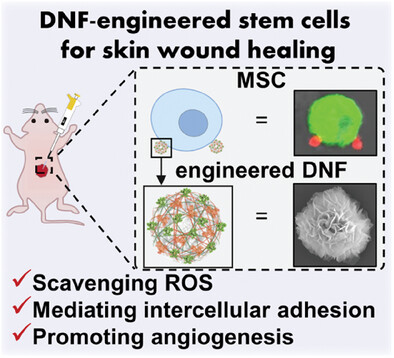
A novel, self-assembled DNA-based composite designed to enhance mesenchymal stem cell (MSC) therapy for skin wound healing is presented. The composites demonstrate the ability to promote MSC engraftment at wound sites, enhance their proangiogenic viability, and accelerate wound closure. This stem cell-based therapeutic strategy of engineered DNA composites represents a promising platform for optimizing wound repair and tissue regeneration.
Multivalent Sulfur Vacancy-Rich NiCo2S4@MnO2 Urchin-Like Heterostructures for Ambient Electrochemical N2 Reduction to NH3
- First Published: 05 March 2024
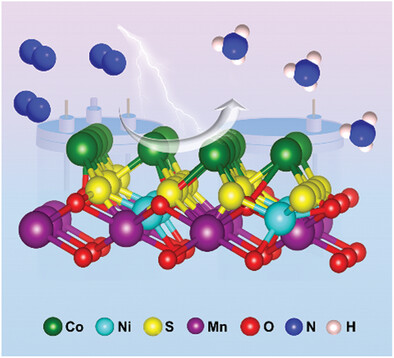
Urchin-like multivalent sulfur vacancy-rich NiCo2S4@MnO2 heterostructures are synthesized by a facile and scalable in-situ hydrothermal method for ambient nitrogen (N2) reduction to ammonia. The Sv-NiCo2S4@MnO2 heterostructures signify a high electrocatalytic N2 reduction to ammonia (NH3) in the basic electrolyte (0.1 м KOH) at room temperature and ambient pressure, as confirmed by both experimental and calculation results.
VO2/MoO3 Heterojunctions Artificial Optoelectronic Synapse Devices for Near-Infrared Optical Communication
- First Published: 08 March 2024
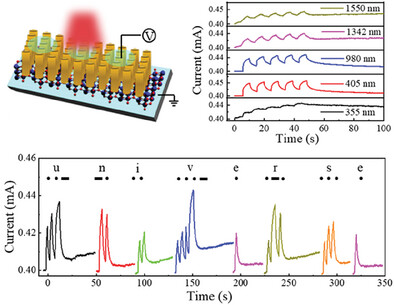
The textured MoO3 film is grown on VO2 layers to fabricate VO2/MoO3 heterojunction optoelectronic synapse device. Benefiting from the highly efficient light harvesting and the unique interface effect, the device not only exhibits electrical synaptic functions, but can induce advanced photonic synaptic functions at optical communication wavebands. This work provides effective strategies to facilitate neuromorphic computing integrated with infrared optical communication.
Exploring Carbonization Temperature to Create Closed Pores for Hard Carbon as High-Performance Sodium-Ion Battery Anodes
- First Published: 09 April 2024
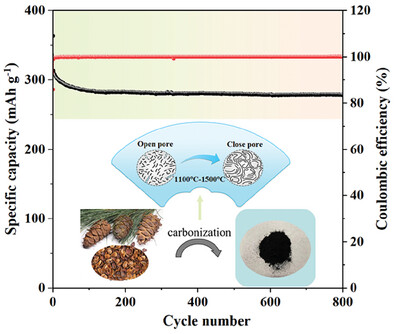
A straightforward approach is proposed to develop rich closed pores in pinenut-derived carbon to improve Na+ plateau storage by adjusting pyrolysis temperature. The optimized sample, namely the pinenut-derived carbon at 1300°C, shows a high Na-storage capacity in both half-cells (278 mAh g−1 after 800 cycles at 0.2 A g−1), and the relationship between the structure and performance is kindly elucidated.
Heterostructure Engineering of NiCo-LDHs for Enhanced Energy Storage Performance in Aqueous Zinc-Ion Batteries
- First Published: 03 March 2024
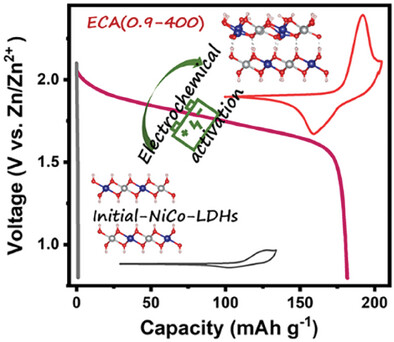
The heterogeneous NiCo−LDHs/Ni(Co)OOH as cathode in mild AZIBS for the first time, is in situ constructed using the high-potential and large-cycles electrochemical cycling activation. The abundant heterointerfaces and optimized electronic structure enable it to display high capacity and fast storage reaction kinetics.
D–A Conjugated Polymer/CdS S-Scheme Heterojunction with Enhanced Interfacial Charge Transfer for Efficient Photocatalytic Hydrogen Generation
- First Published: 05 March 2024
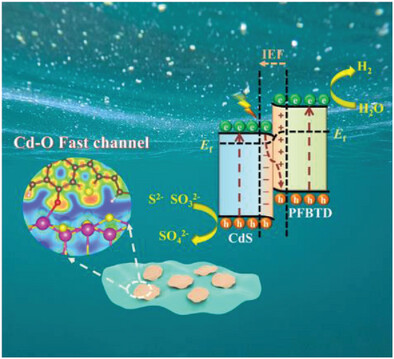
Due to enhanced charge separation and maximized redox capability, S-scheme heterojunctions have shown bright prospects in photocatalysis. This work introduces a donor–acceptor conjugated polymer/CdS S-scheme heterojunction for photocatalytic H2 evolution. The obtained composite demonstrates an impressive hydrogen production rate of 7.62 mmol g−1 h−1. The Cd─O bond formed at the interface facilitates the rapid charge transfer.
Tailoring Advanced CdS Anisotropy-Driven Charge Spatial Vectorial Separation and Migration via In Situ Dual Co-Catalyst Synergistic Layout
- First Published: 06 March 2024
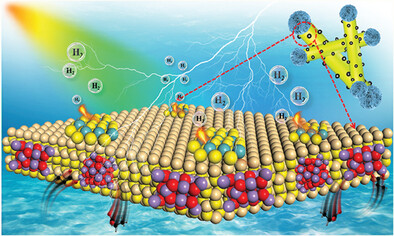
The in situ directional growth strategy of dual co-catalysts can effectively weaken the Coulomb force between photogenerated carriers, thus anisotropically driving the spatial anisotropic separation and efficient utilization of CdS photogenerated carriers. The composite catalyst 35MnOx-CdS-MoS2-3 exhibits excellent photocatalytic hydrogen evolution performance, with an apparent quantum efficiency of 22.30% at 450 nm.
Hybrid Cellular Nanovesicles Block PD-L1 Signal and Repolarize M2 Macrophages for Cancer Immunotherapy
- First Published: 08 March 2024

Hybrid cellular nanovesicles (hNVs) are prepared by fusing M1 macrophage-derived nanovesicles (M1-NVs) and PD1-overexpressed tumor cell-derived nanovesicles (PD1-NVs) for enhanced cancer immunotherapy. The M1-NVs promote the repolarization of M2-like TAMs to M1-like phenotype and further increase the release of pro-inflammatory cytokines, resulting in improved immunosuppressive tumor microenvironment. Concurrently, the PD1-NVs block PD1/PD-L1 pathway, synergizing with M1-NVs to boost cancer immunotherapy.
Strain Engineering of Cd0.5Zn0.5S Nanocrystal for Efficient Photocatalytic Hydrogen Evolution from Wasted Plastic
- First Published: 10 March 2024
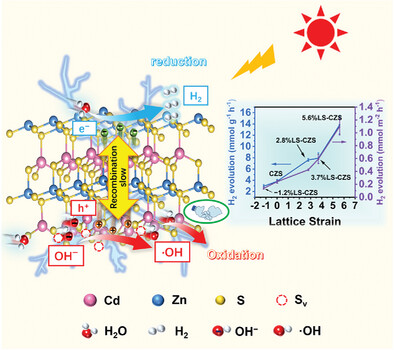
This article presents a simple solvothermal method for synthesizing Cd0.5Zn0.5S nanocrystals with adjustable lattice strains. The lattice expansion in Cd0.5Zn0.5S suppresses electron–hole recombination and facilitates charge separation/transport. Moreover, the lattice expansion induces surface S vacancies and adsorbed OH groups, further enhancing the redox reactions. These unique features result in an impressive waste plastic-to-hydrogen conversion rate of 13.83 mmol g−1 h−1.
Realizing Near Infrared Mechanoluminescence Switch in LAGO:Cr Based on Oxygen Vacancy
- First Published: 07 March 2024

Using the Ga3+→Al3+ cation substitution strategy is used to adjust the defect distribution, and the oxygen vacancy is analyzed in detail as a key point in generating ML. In addition, combining the crystal structure and defects, the potential mechanism of Cr3+ ion 4T2 and 2E energy level transition emission is deeply explored.
Toward Photosynthetic Mammalian Cells through Artificial Endosymbiosis
- First Published: 20 March 2024
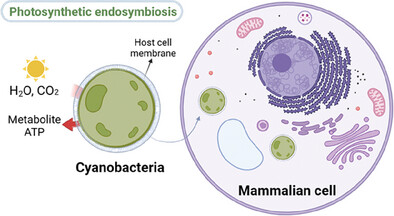
Under specific conditions, endosymbiotic cyanobacteria have the potential to aid mammalian cells in conducting photosynthesis. In particular, the cyanobacterium Synechocystis PCC6803 has shown the ability to partially alleviate ATP deficiencies in mouse macrophages when exposed to light. Notably, human embryonic kidney cells have been identified as more suitable candidates for establishing a permanent symbiotic relationship with Synechocystis PCC6803.
NIR-Triggered Multifunctional NO Nanoplatform for Conquering Thermal Resistance in Biofilms
- First Published: 06 March 2024

Au@mSiO2-arg/ICG combines phototherapeutic and gas therapeutic features for efficient biofilm elimination. Under 808 nm light, ROS can cause the release of NO from l-arg. Meanwhile, NO suppresses the HSP70 expression to achieve mild PTT and reduces EPS via regulating c-di-GMP. The platform addresses concerns like bacterial heat resistance and offers the potential for NO-enhanced mild PTT and aPDT in clinical applications.
Healthy Tendon Stem Cell-Derived Exosomes Promote Tendon-To-Bone Healing of Aged Chronic Rotator Cuff Tears by Breaking the Positive-Feedback Cross-Talk between Senescent Tendon Stem Cells and Macrophages through the Modulation of Macrophage Polarization
- First Published: 08 March 2024
FeNi2S4–A Potent Bifunctional Efficient Electrocatalyst for the Overall Electrochemical Water Splitting in Alkaline Electrolyte
- First Published: 11 March 2024
Carbon Fiber Film with Multi-Hollow Channels to Expedite Oxygen Electrocatalytic Reaction Kinetics for Flexible Zn–Air Battery
- First Published: 05 March 2024
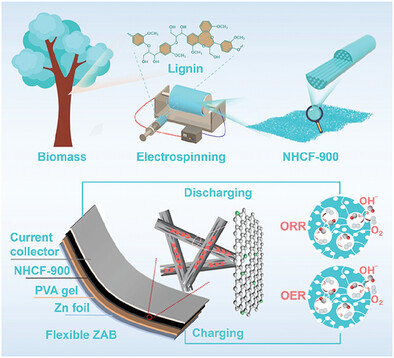
The electrospinning strategy combined with pore-controlled engineering to effectively construct highly accessible active graphitic-N/pyridinic-N sites on the lignin-based flexible freestanding air electrode (FFAE) with multi-hollow channel structures, resulting in excellent ORR/OER activity and high-performance flexible zinc–air batteries. This work provides a potential way to design and produce high-performance biomass-based bifunctional FFAE for electrochemical energy devices.
DFT Predirected Molecular Engineering Design of Donor-Acceptor Structured g-C3N4 for Efficient Photocatalytic Tetracycline Abatement
- First Published: 10 March 2024

Density functional theory calculations screened benzaldehyde from six species of oxygen-containing functional group substituted benzene derivatives to construct a donor–acceptor structure with g-C3N4. Benefiting from benzaldehyde as an electron donor to modulate the HOMO, the synthesized BzCN photocatalyst possessed enhanced light absorption and carrier separation capabilities to drive reactive oxygen species generation for the degradation of tetracycline hydrochloride.
A High-Voltage-Specialized Direct-Current Triboelectric Nanogenerator for Air Purification
- First Published: 03 March 2024

This work proposed a high-voltage, specialized direct current triboelectric nanogenerator based on dual strategy of dielectric enhancement layer structure and lubricating oil. It can output 3 kV voltage with a high surface charge density of 320 µC m-2, enabling it to continuously power carbon nanowires that emit negative air ions for air purification purposes.
Co–N–C/C Bifunctional Electrocatalyst for Dual Applications in Seawater Electrolysis and Catalyst in Hydrazine Fuel Cells
- First Published: 06 March 2024
Biomimetic Mineralization Synthesis of Flower-Like Cobalt Selenide/Reduced Graphene Oxide for Improved Electrochemical Deionization
- First Published: 04 March 2024
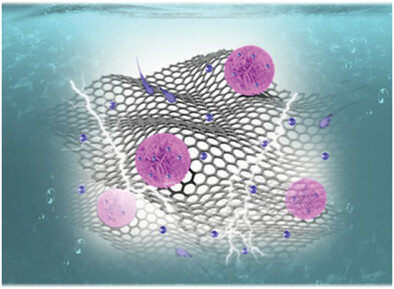
A biomimetic mineralization synthetic strategy is developed to construct flower-like cobalt selenide/reduced graphene oxide (Bio-CoSe2/rGO) heterostructures, which can build complex architectures by tuning the nucleation and growth processes, and external thermal energy, high-pressure/temperature or structure-directing agents are not required. The Bio-CoSe2/rGO heterostructures show superior desalination performances due to the large interface area, exceptional charge/ion transport, and sufficient adsorption sites.
Ni and Co Active Site Transition and Competition in Fluorine-Doped NiCo(OH)2 LDH Electrocatalysts for Oxygen Evolution Reaction
- First Published: 18 March 2024
Band Structure Tuning via Pt Single Atom Induced Rapid Hydroxyl Radical Generation toward Efficient Photocatalytic Reforming of Lignocellulose into H2
- First Published: 05 March 2024
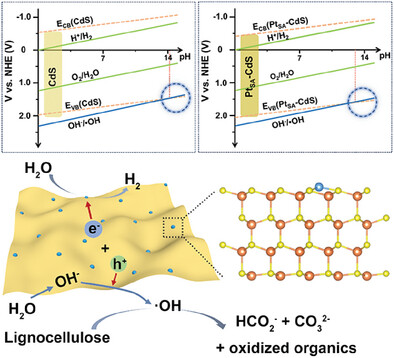
Pt single atom is anchored on CdS nanosheet for lignocellulose photoreforming. The strong metal–substrate interaction can induce a downward shift valence band for PtSA-CdS, thus enabling the generation of •OH/OH− redox shuttle under benign condition. Additionally, the Pt single atom with thermoneutral can serve as active sites for HER. These features contribute to a remarkable activity for lignocellulose-to-H2 conversion.
Visual Sensor with Host–Guest Specific Recognition and Light–Electrical Co-Controlled Switch
- First Published: 08 March 2024
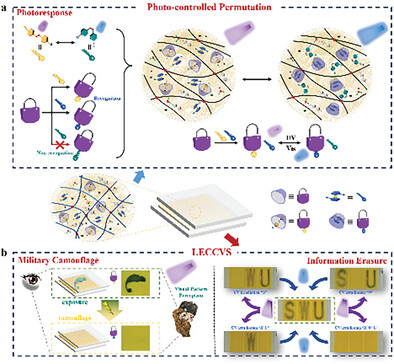
This work reports a portable visual sensor by integrating a multi-mode sensing platform of photo-controlled host–guest specific molecular recognition and electrochromism, which can perceive optical and electrical dual-mode stimuli, and efficiently realize light-controlled stealth in military camouflage and information erasure through the visual anti-counterfeiting signal of human–computer interaction.
Extremely Stable Ag-Based Photonics, Plasmonic, Optical, and Electronic Materials and Devices Designed with Surface Chemistry Engineering for Anti-Tarnish
- First Published: 13 March 2024
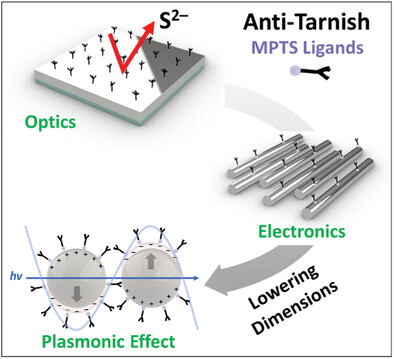
The surface chemistry of Ag structures of different dimensions (0D/1D/3D) with MPTS ligands under benign conditions to prevent the deterioration of the structural, optical, and electrical properties from sulfidation is engineered. This anti-tarnish technique prevents the loss of plasmonic effects and F–P cavity resonances. It leads to the highly sustainable performance of LED reflectors, conductive paints, flexible electrodes, and wearable strain sensors.
Erythrocyte Membrane Camouflaged Nanotheranostics for Optical Molecular Imaging-Escorted Self-Oxygenation Photodynamic Therapy
- First Published: 13 March 2024
Low-Frequency Evolution Mechanism of Customized HEAs-Based Electromagnetic Response Modes Manipulated by Carbothermal Shock
- First Published: 10 March 2024
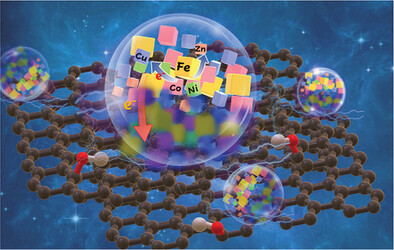
An ultra-convenient carbothermal shock method is used to synthesize FeCoNiCuZn HEAs while lignin-based carbon fiber paper (L-CFP) as carbon support. Based on the pointing electron enrichment within L-CFP/FeCoNiCuZn HEAs heterointerfaces, low-frequency evolution is achieved by a “sacrificing” strategy. This work is of great significance for the regulation strategy of customized HEAs-based EM response.
Editor's Choice
Operando Studies of Bismuth Nanoparticles Embedded in N, O-Doped Porous Carbon for High-Performance Potassium-Ion Hybrid Capacitor
- First Published: 08 March 2024

A nanocomposite of Bismuth nanoparticles in heteroatoms (N and O)-doped carbon framework exhibits remarkable remarkably well-retained energy density at a high-power density (11107 W kg–1 at 98 Wh kg–1) in potassium-ion hybrid capacitor as a negative electrode. Advanced operando synchrotron X-ray diffraction and Raman spectroscopy reveal a reversible mechanism of ″absorption-alloying″ during (de-)potassition.
Regulating Electrolyte Solvation Structures via Diluent-Solvent Interactions for Safe High-Voltage Lithium Metal Batteries
- First Published: 07 March 2024
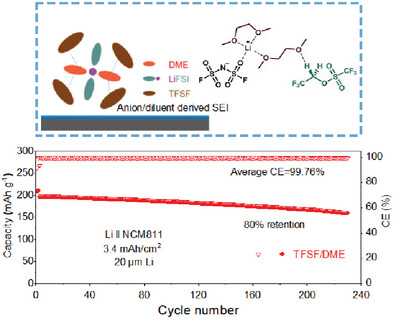
A highly fluorinated sulfonate (TFSF) is applied as diluent to prepare localized high concentration electrolyte (LHCE) with nonflammability, and the hydrogen bonding interactions between diluent and solvent are first proved to be critical for the electrolyte solvation structure and solid electrolyte interphase (SEI).
Optimization of Carbon-Defect Engineering to Boost Catalytic Ozonation Efficiency of Single Fe─N4 Coordination Motif
- First Published: 10 March 2024
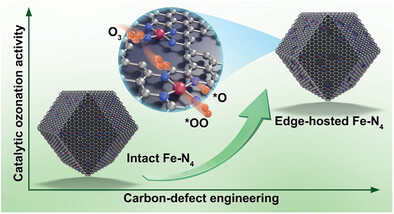
Enhancing the catalytic activity of single-atom metal-nitrogen-carbon (M─N─C) catalysts for volatile organic compounds through carbon-defect engineering is challenging yet meaningful. This study offers a rational approach to boost the catalytic ozonation activity of M─N─C catalysts and provides deeper insights into the influence of periphery carbon environment on the properties and performance of metal-N4 sites.
A Dual-Mode Triboelectric Nanogenerator for Efficiently Harvesting Droplet Energy
- First Published: 06 March 2024

A dual-mode TENG is proposed to harvest both electrostatic energy at liquid-solid surface from a droplet TENG and elastic potential energy of the vibrated cantilever from a contact-separation TENG. Triggered by small droplets, the flexible cantilever beam can produce amplified output charges. An array system is also demonstrated for building self-powered system, offering promising applications for efficiently harvesting raindrop energy.
2D Conductive Metal-Organic Frameworks Based on Tetraoxa[8]circulenes as Promising Cathode for Aqueous Zinc Ion Batteries
- First Published: 08 March 2024
![2D Conductive Metal-Organic Frameworks Based on Tetraoxa[8]circulenes as Promising Cathode for Aqueous Zinc Ion Batteries](/cms/asset/c095ccc6-fbf4-4087-9eee-0e2281a5e3d5/smll202400923-gra-0001-m.jpg)
A series of novel 2D conductive metal-organic frameworks (c-MOFs) named M-TOCs are constructed by coordinating a conjugated linker of tetraoxa[8]circulene derivative (8OH-TOC) with corresponding metal ions. In virtue of their decent electrical conductivity and good redox activity, they performed high reversible capacity, decent cycle stability and excellent rate capability as the cathode materials of aqueous zinc ion batteries, indicating their great potential in energy storage.
Highly Active CoNi-CoN3 Composite Sites Synergistically Accelerate Oxygen Electrode Reactions in Rechargeable Zinc–Air Batteries
- First Published: 03 March 2024
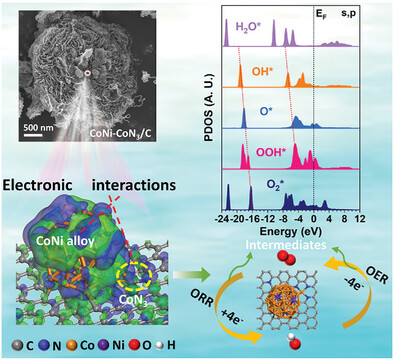
A novel composite catalyst CoNi-CoN3/C containing CoNi alloyed nanoparticles and CoN3 moieties for oxygen electrode reactions is constructed with strong interactions of composite sites, which optimizes the adsorption strengths of intermediates and facilitates the fast kinetics of electrode reactions. Both aqueous and flexible quasi-solid-state rechargeable ZABs using CoNi-CoN3/C display large power density, high specific capacity, and strong durability.
Brain-Targeted Black Phosphorus-Based Nanotherapeutic Platform for Enhanced Hypericin Delivery in Depression
- First Published: 10 March 2024

This article explores the breakthrough in depression treatment through the novel nanoplatform BP-RVG29@HYP (BRH), which effectively overcomes the blood-brain barrier challenges. Leveraging black phosphorus nanosheets and advanced delivery methods, BRH significantly alleviates depressive symptoms and oxidative stress in mice, with minimal side effects. This pioneering approach marks a significant stride in antidepressant drug development.
In Situ Plasma Polymerization of Self-Stabilized Polythiophene Enables Dendrite-Free Lithium Metal Anodes with Ultra-Long Cycle Life
- First Published: 09 March 2024
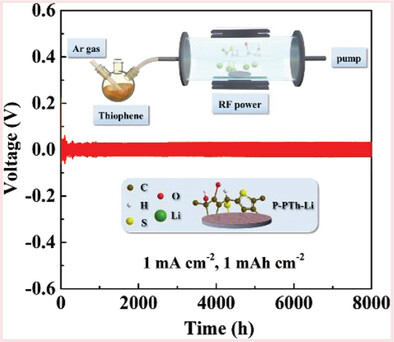
Polythiophene is in situ polymerized on Li metal by plasma polymerization as a flexible polymer protective layer. The Li anodes modified by the plasma polymerized polythiophene are self-stabilized on Li metal due to the chemical reaction of Li and the plasma species of thiophene groups, showing much higher structural stability, and the symmetric cells can be stably cycled for 8000 h.
Advanced Hollow Cubic FeCo-N-C Cathode Electrocatalyst for Ultrahigh-Power Aluminum–Air Battery
- First Published: 28 March 2024
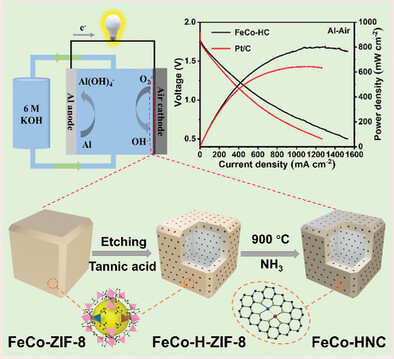
FeCo–HNC, featuring atomically dispersed dual metal sites and a hollow cubic structure, exhibits a half-wave potential of 0.907 V. Integrated into an aluminum–air battery, it attains unprecedented power densities of 804 mW cm−2 in ambient air and 1200 mW cm−2 in an oxygen-rich environment, showcasing stability over an impressive 200 h continuous operation.
Amino-Acid-Encoded Bioinspired Supramolecular Self-Assembly of Multimorphological Nanocarriers
- First Published: 07 March 2024

Amino-acid-encoded multi-morphological building block platform: A universal building block cysteine (Cys)(SEt)-X-2-cyano-benzothiazole (CBT) is employed here as an ideal platform for building nanostructures with diverse morphologies. After caging the Cys with stimulus-responsive sites and modifying X with probes/drugs, multi-morphological and multi-functional nanocarriers can be easily prepared for a broad range of biomedical applications.
Multifunctional Liposomes Targeting Amyloid-β Oligomers for Early Diagnosis and Therapy of Alzheimer's Disease
- First Published: 10 March 2024
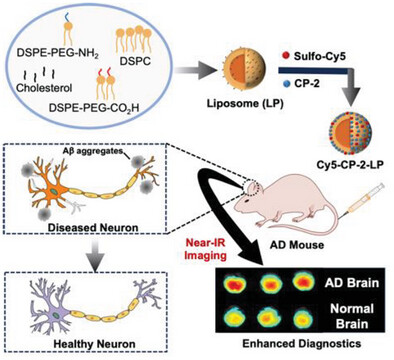
Early detection and treatment of Alzheimer's disease (AD) are achieved through a novel liposome-based platform. In relevant Caenorhabditis elegans AD models, biocompatible cyclic d,l-α-peptide (CP-2) conjugated liposomes (CP-2-LPs) enhance cognition and extend lifespan by reducing toxic Aβ levels. Administration of fluorescently labeled CP-2-LPs to young AD mice enables precise diagnosis, underscoring their value for early detection and targeted therapy.
Strain Self-Adaptive Iron Selenides Toward Stable Na+-Ion Batteries with Impressive Initial Coulombic Efficiency
- First Published: 08 March 2024

Strain self-adaptive strategy is proposed to achieve the appealing stability and high initial Coulombic efficiency of iron selenide with a high tap density. Systematical characterizations confirm the self-adaptive homologous heterointerface alleviates the structural strain of the anode and improves reversibility of the transformation reaction. This work provides an ingenious insight for other electrodes with excellent electrochemical performance.
SPOOC (Sensor for Periodic Observation of Choline): An Integrated Lab-on-a-Spoon Platform for At-Home Quantification of Choline in Infant Formula
- First Published: 08 April 2024
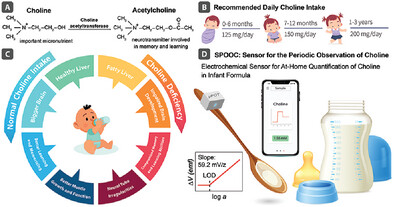
SPOOC, a fast, accurate, and wireless device, quantifies choline in infants' formulas in home settings. It utilizes laser-induced graphene as a platform for choline potentiometric detection and features a detachable potentiometric device that wirelessly transmits data to nearby smartphones. This device assists parents in ensuring infants receive sufficient choline, promoting better neural and muscular health.
Regulating Electron Filling and Orbital Occupancy of Anti-Bonding States of Transition Metal Nitride Heterojunction for High Areal Capacity Lithium–Sulfur Full Batteries
- First Published: 08 March 2024
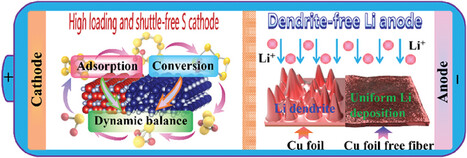
A novel hierarchical p-Fe2N/n-VN heterostructure with optimal electronic structure is constructed as the electrode of a bifunctional lithium–sulfur battery. The formed p–n heterostructures have reasonable D-band centers, achieving more π* and medium σ* bonding electrons to occupy in filled and anti-bonding states; thus, dynamically balancing the electrochemical reaction processes of S and Li.
Endogenous Interfacial Mo−C/N−Mo-S Bonding Regulates the Active Mo Sites for Maximized Li+ Storage Areal Capacity
- First Published: 06 March 2024
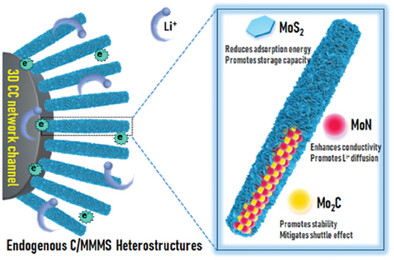
Herein, a step-wise in situ thermal treatment and hydrothermal strategies are implemented to synthesize unique endogenous MoS2 nanosheets coupling with Mo2C-MoN nanowires directly on carbon cloth (denoted C/MMMS). The unique coordination bonding of Mo−C/N−Mo-S, multidimensional morphology, and rich heterojunction structure endow the entire architecture with extraordinary structural stability, optimized Li+ storage mechanism, improved charge transport, and Li+ adsorption capabilities.
Thermal-Responsive Gel-Based Overheat Limiter Enabled Intelligent Photothermal Therapy
- First Published: 08 March 2024
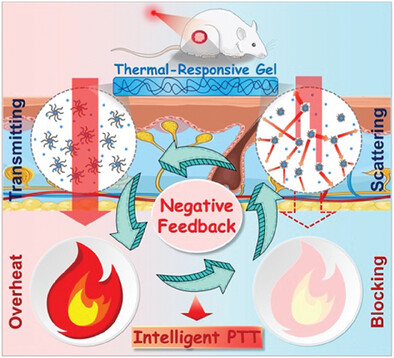
Utilizing the thermal-responsive microgel, a smart overheat limiter with negative feedback regulation between temperature and transmittance is developed, achieving photothermal therapy (PTT) without the risk of excessive heating and accidental skin tissue thermal damage. This innovative approach allows for a more controlled and intelligent PTT treatment, offering a promising advancement in medical technology.
Gene Delivery From Granular Scaffolds for Tunable Biologics Manufacturing
- First Published: 11 March 2024
High-Sensitivity Photoelectrochemical Ultraviolet Photodetector with Stable pH-Universal Adaptability Based on Whole Single-Crystal Integrated Self-Supporting 4H-SiC Nanoarrays
- First Published: 07 March 2024
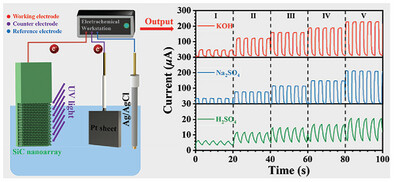
A stable pH-universal photoelectrochemical photodetector is designed based on a whole single-crystal integrated self-supporting 4H-SiC nanopore array photoelectrode. The device delivers excellent photodetection performance with high responsivity, detectivity, external quantum efficiency, and rapid rise/decay times of 218.77 mA W−1, 6.64 × 1013 Jones, 72.47%, and 17/48 ms, respectively, under 375 nm light illumination.
Synergistic Effect of Co-Mo Pinning in Lay-Structured Oxide Cathode for Enhancing Stability toward Potassium-Ion Batteries
- First Published: 10 March 2024
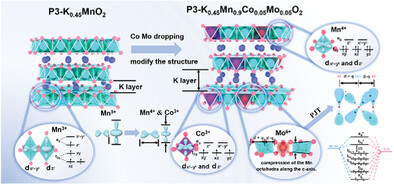
The [Mn-Co-Mo]O6 octahedra are introduced into P3-K0.45MnO2 to optimize the local electron structure. The [MoO6] propose an empty outermost electrons (4d05s0) orbitals structure and the smaller ionic radius and higher oxidation state can induce a second-order JTE distortion in the adjacent [MnO6] octahedra. Co3+ do not induce Jahn-Teller effects due to the empty electron in eg orbital.
Reducing Domain Density Enhances Conversion Efficiency in GeTe
- First Published: 14 March 2024
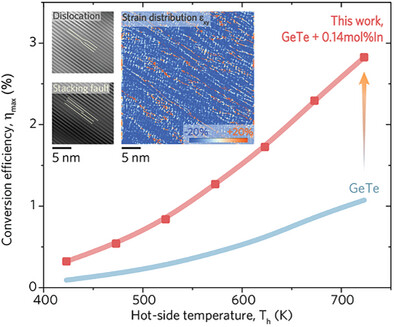
Domain density modification coupled with the incorporation of trace indium in GeTe significantly elevates the peak figure-of-merit (zT) to 1.3 and achieves a 3% thermoelectric conversion efficiency at 700 K. These enhancements stem from strain redistribution via hot-pressing and carrier concentration optimization through the reduction of germanium vacancies, bypassing the need for additional doping.
Microscopic-Level Insights into P-O-Induced Strong Electronic Coupling Over Nickel Phosphide with Efficient Benzyl Alcohol Electrooxidation
- First Published: 08 March 2024
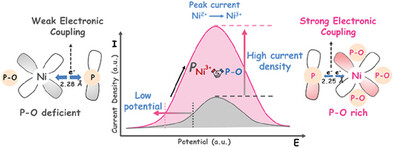
High-valence nickel driven by phosphorus-oxygen terminals-rich species integrated on nickel foam substrate (Ni2P-O-300) is constructed by an anion-assisted pyrolysis strategy, which promotes the rapid yet in situ formation of much high-valence nickel with a high reaction activity at a relatively low potential under electrochemical conditions. Resultantly, the hydrogen production efficiency and kinetic constant of electrooxidation of benzyl alcohol driven by Ni2P-O-300 are 9- and 2.8- fold higher than that of Ni2P-O-500 with the deficient phosphorus-oxygen terminals, respectively.
Highly Selective and Reversible Detection of Simulated Breath Hydrogen Sulfide Using Fe-Doped CuO Hollow Spheres: Enhanced Surface Redox Reaction by Multi-Valent Catalysts
- First Published: 10 March 2024
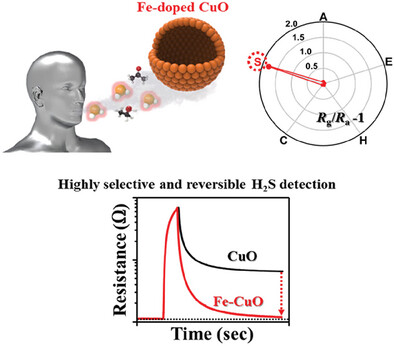
Herein, Fe-doped CuO spheres are prepared by spray pyrolysis and exhibit high selectivity and reversibility to hydrogen sulfide (H2S) under high humidity. These superior H2S sensing characteristics are essential for disease diagnosis of halitosis or asthma by breath analysis. Those unexpected high H2S sensing performance is attributed to enhanced surface redox reaction by multi-valent Fe ion doping.
Space-Confined Growth of Ultrathin P-Type GeTe Nanosheets for Broadband Photodetectors
- First Published: 08 March 2024
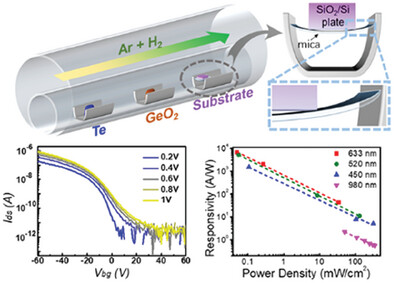
A space-confined chemical vapor deposition method is used to create ultrathin germanium telluride (GeTe) nanosheets, and the GeTe resonant bonding epitaxy results in thickness-dependent photoelectric properties. The ultrathin GeTe-based field-effect transistor exhibits excellent p-type behavior with an on/off ratio of 105 and broad photodetection from 450–980 nm with a responsivity of 103 A W–1.
Optimized Lithium Ion Coordination via Chlorine Substitution to Enhance Ionic Conductivity of Garnet-Based Solid Electrolytes
- First Published: 07 March 2024
Development of Injectable Thermosensitive Nanocomposite Hydrogel for Ratiometric Drug Delivery to Treat Drug Resistant Chondrosarcoma In Vivo
- First Published: 08 March 2024
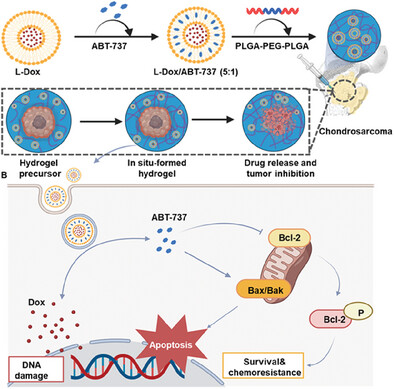
A radiometric nanocomposite hydrogel capable of co-delivering Doxorubicin and the Bcl-2 inhibitor ABT-737 is engineered, employing an optimized drug ratio of 5:1 (w/w) suitable for both in vitro and in vivo applications. The findings reveals a synergistic tumor inhibition effect with the co-delivery hydrogel. This innovative approach presents a transformative strategy for addressing drug resistance in chondrosarcoma chemotherapy, holding substantial promise for clinical applications.
NiCo2O4 Nanowires Immobilized on Nitrogen-Doped Ti3C2Tx for High-Performance Wearable Magnesium–Air Batteries
- First Published: 10 March 2024

A high-performance flexible Mg–air battery is demonstrated with powering blue flexible light-emitting diode (LED) arrays and red smart rollable wearable device in practical applications. Through low over-potential NiCo2O4 nanowires well immobilized on nitrogen-doped Ti3C2Tx, the efficient oxygen electrode contributes to significantly boost oxygen diffusion and delivers high power density of 9.8 mW cm–2.
Yolk-Shell Construction of Na3V2(PO4)2F3 with Copper Substitution Microsphere as High-Rate and Long-Cycling Cathode Materials for Sodium-Ion Batteries
- First Published: 08 March 2024
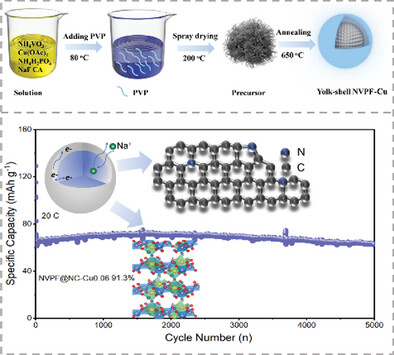
Unique yolk-shell structured Na3V2(PO4)2F3 microspheres with synergistic regulation of both the crystal structure and the interface properties endows the cathode possessing high electronic conductivity and fast sodium ion diffusion kinetics, realizing the cathode with high-rate capacity and long-cycling life for sodium-ion batteries.
Atomic-Level Catalyst Coupled with Metal Oxide Heterostructure for Promoting Kinetics of Lithium-Sulfur Batteries
- First Published: 08 March 2024

Single Fe atoms catalysts implanted in hollow TiO2 nanospheres are prepared as electrocatalysts and anchoring sites for Li-S batteries, which tailor the electronic structure and reduce the energy barrier for sulfur transformations, further imposing strong sulfur immobilization and catalyzation. The corresponding Ah-level Li-S pouch cell delivers a high specific energy of 1.65 Ah, offering a promising route toward the practical high-energy-density Li-S battery.
A Highly Dispersed Cobalt Electrocatalyst with Electron-Deficient Centers Induced by Boron toward Enhanced Adsorption and Electrocatalysis for Room-Temperature Sodium–Sulfur Batteries
- First Published: 08 March 2024
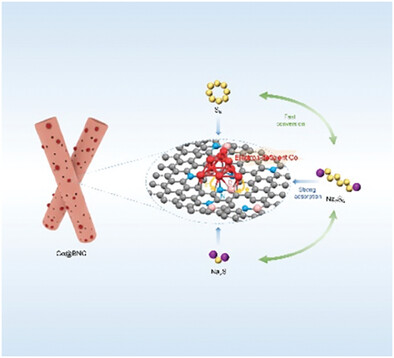
A highly dispersed Co electrocatalyst with electron-deficient centers induced by B doping is constructed by a simple one-pot method. As a host of sulfur of room-temperature sodium-sulfur batteries, it achieves enhanced chemical adsorption toward polysulfides (NaPSs) and accelerates sulfur conversion. The preparation method is also suitable for metallic Ni electrocatalyst.
Designing Atomic Interface in Sb2S3/CdS Heterojunction for Efficient Solar Water Splitting
- First Published: 08 March 2024
Dual Defect Passivation at the Buried Interface for Printable Mesoscopic Perovskite Solar Cells with Reduced Open-Circuit Voltage Loss
- First Published: 26 April 2024
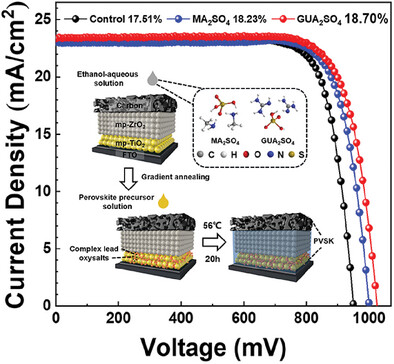
Treating the mesoscopic TiO2 electron transport layer with guanidine sulfate facilitates a dual passivation by inducing in situ reactions that suppresses non-radiative recombination and promotes charge extraction in printable hole-conductor-free mesoscopic perovskite solar cells with carbon electrodes. The treatment ultimately diminishes the open-circuit voltage loss and improves the power conversion efficiency from 17.51% to 18.70%.
Constructing Nano-Heterostructure with Dual-Site to Boost H2O2 Activation and Regulate the Transformation of Free Radicals
- First Published: 10 March 2024
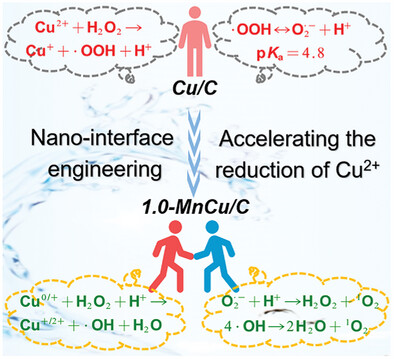
Based on nano-interface engineering, a nano-heterostructure catalyst (MnCu/C) composed of MnO and Cu is fabricated. The construction of electron bridge Mn−N/O−Cu accelerates the reduction of Cu2+, which generates more ROS (1O2 and ·OH) and prevents Cu2+ from oxidizing H2O2 to form O2•−. The rational design of dual-site catalyst provides new insights into the effective activation of H2O2.
VOx Matrix Confinement Approach to Generate Sub-3 nm L10-Pt-Based Intermetallic Catalysts for Fuel Cell Cathode
- First Published: 19 April 2024
Electrosynthesis of H2O2 Promoted by π–π Interaction on a Metal-Free Carbon Catalyst
- First Published: 08 March 2024

The metal-free carbon materials g-C3N4/CNT provided here offers an alternative for developing cost-effective and efficient 2e− ORR catalyst via facile π–π interaction strategy, which further complements the well-reported approaches to modify carbon-based materials such as introduction of oxygenated groups and heteroatom doping.
Transforming Undesired Corrosion Products into a Nanoflake-Array Functional Layer: A Gelatin-Assistant Modification Strategy for High Performance Zn Battery Anodes
- First Published: 12 March 2024
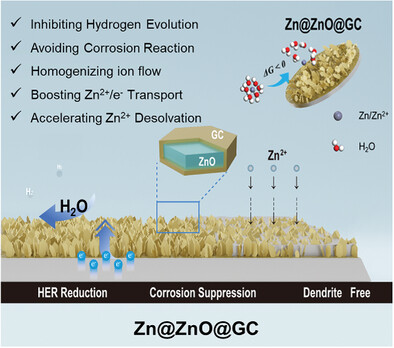
A functional layer on the Zn anode is built by a gelatin-assistant corrosion and low-temperature pyrolysis method. The modification mechanism of the functional layer for Zn anode is revealed in detail. The modified Zn anode exhibits superior performance in both half cells and full cells, showing a good application prospect for this promising strategy.
Phase-Tunable Molybdenum Boride Ceramics as an Emerging Sensitive and Reliable SERS Platform in Harsh Environments
- First Published: 12 March 2024
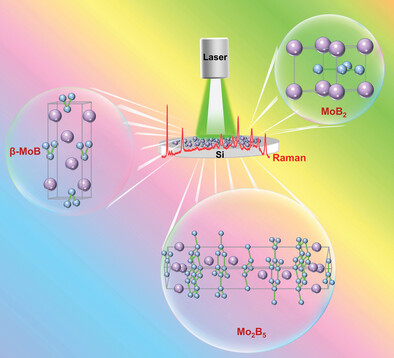
The all-ceramic SERS substrates prepared by three different crystalline phases of molybdenum boride powders have good SERS activity, which is closely related to their crystal structure. Among them, β-MoB has the best SERS enhancement activity, and the enhancement factor of 5 orders is comparable to that of noble metals. This all-ceramic SERS platform shows promising applications in corrosive and high temperature environments.
Bio-Inspired Photosensory Artificial Synapse Based on Functionalized Tellurium Multiropes for Neuromorphic Computing
- First Published: 13 March 2024
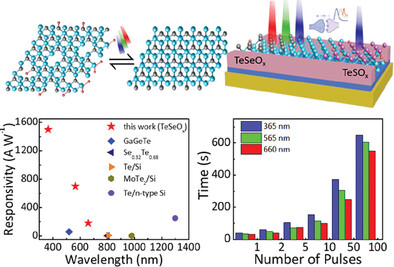
This study explores the synthesis of Tellurium sulfur oxide (TeSOx) and Tellurium selenium oxide (TeSeOx) nanomaterials via vapor deposition, highlighting their unique photo-synaptic responses to different optical stimulations. Further, TeSeOx multiropes demonstrate their potential in optical neuromorphic computing through enhanced electrical performance and high responsivity achieved with low voltage and light intensity.




